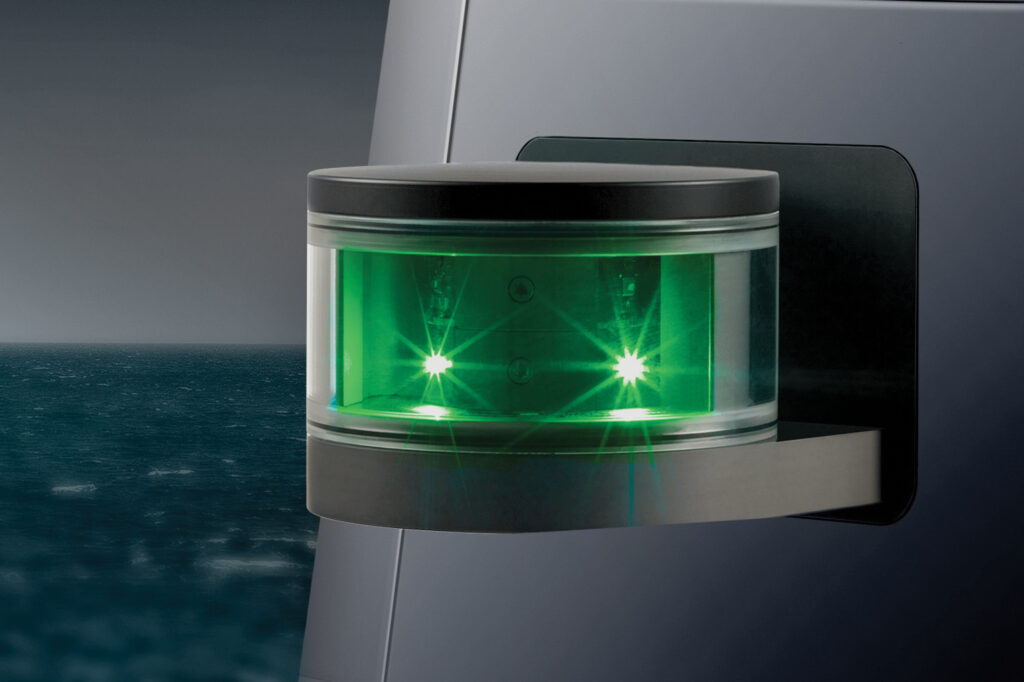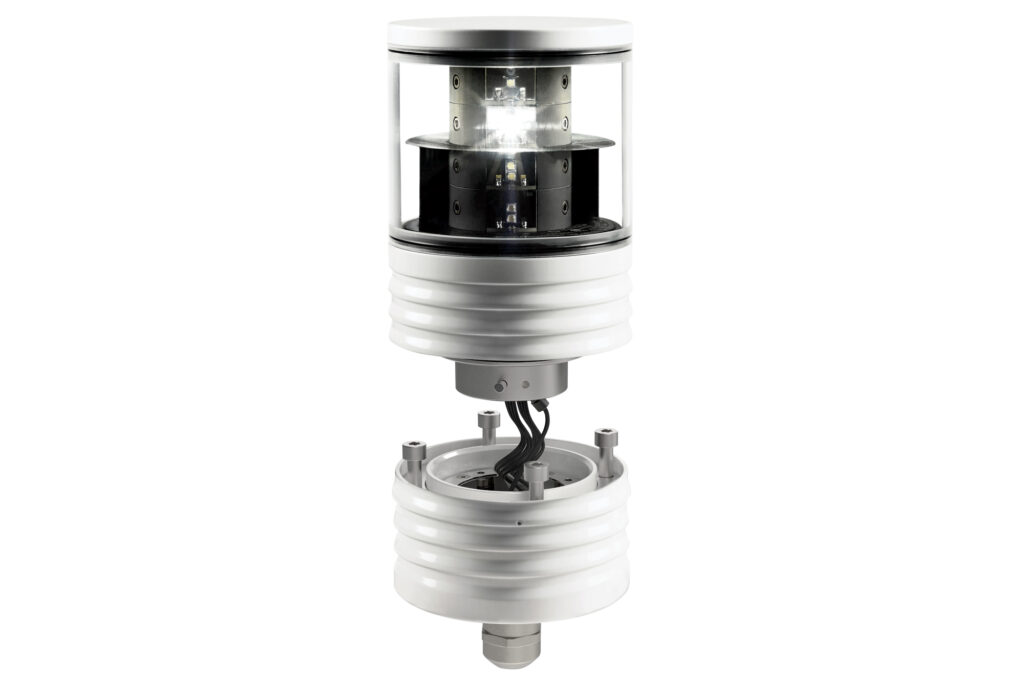
Optonaval’s navigation lights are a high-performance LED modular design with a series of internal health-metric sensors to reduce spare-parts requirements. Optonaval’s lights are made with common parts, which makes them easier to service. Each light has redundant, high-performance LED elements. The lights communicate with a control panel via the company’s proprietary protocol, but they can connect to bridge systems via Modbus or, upon request, NMEA 0183 and 2000.
Optonaval created its nav lights for superyachts and ships, so it had to obtain official Wheelmark certification from the International Maritime Organization. “The main challenge was to design electronics [that] act like an ordinary lamp with an Edison lightbulb and still do what a state-of-the-art light should do,” says Markus Hempel, Optonaval’s managing director. “The modularity isn’t restricted to the housing, acrylic cylinders and O-rings, but nearly all parts. The printed circuit boards are identical, the LED elements are stackable—no soldering.”
The result? The lights can be used in any installation.

How It Works
Optonaval lights contain two sets of LEDs—a primary and a secondary—for each color and function. If one fails, operators can electronically switch to the backup. Each Optonaval light sends health metrics, including temperature, internal humidity and brightness data, to the control panel where it’s displayed. Optonaval uses marine-grade aluminum housings with a matte-black finish; custom colors are available.
Take the next step: optonaval.com









